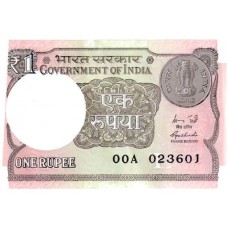CAD to Limit Foreign Currency Borrowings
Arindam Som, Analyst & Soumyajit Niyogi, Associate Director-India Ratings and Research (Fitch Group), Widening current account deficit (CAD) to Raise Borrowing Costs & Limit Foreign Currency Borrowings! The combined effect of a CAD and subsequent rupee depreciation is likely to increase the borrowing costs of Indian corporates.
A weakening rupee, coupled with rising interest rates, and forward premium could impinge on the Indian corporates’ ability to tap foreign markets to raise debt capital. For instance, the annualised forward premium on the USDINR 3-month future contract increased to 4.36% on 21 August 2018 (31 March 2018: 3.46%) – reflecting a commensurate rise in hedging costs.
The corporate liquidity is likely to tighten further, further reducing the financial flexibility. The external account challenges are exacerbated by capital outflows from the debt capital markets in light of heightened volatility in the rupee and bond markets, coupled with a gradual contraction of central banks’ balance sheets and rising interest rates in developed markets.
Higher Capital Outflows and Rising CAD to Widen Credit Spreads: The widening CAD has of late been accompanied by an increase in capital outflows – primarily from the debt capital markets (around USD5.5 billion outflows in FY19 so far).
This could further worsen the demand-supply mismatch in the debt markets – thereby widening credit spreads over the near to medium term. A widening CAD (with capital outflows) not only results in a hardening of benchmark yields, i.e. 10-year government security yields, but also puts upward pressure on corporates’ credit spreads in the short and intermediate tenures.
Yield Volatility Remains Elevated: Externalities resulting in turbulence in emerging currency markets are likely to result in a volatile rupee over the near term. This will be reflected in the corporate bond markets, wherein corporate yields have been exhibiting a rise in the annualised volatility since November 2017. A sharp rise in yield volatility typically increases investors’ exposure to interest rate risk and therefore increases the uncertainty risk premium.
Central banks from emerging economies face challenges in defending their currencies by raising interest rates alone. This adds to the woes of the lending markets (both in conventional banking and debt capital markets), leading to heightened risk aversion. This condition finally corroborates in the higher duration premiums or a reduction in appetite for long-duration financing.
Change in Yield Curve Curvature: Medium to long-term debt instruments are typically held by institutions such as insurance companies. Conversely, intermediate-(one to five years)-term investors such as mutual funds, corporate treasuries etc. are required to reflect daily changes in securities holdings either due to mark-to-market requirements or to report periodical changes in Assets Under Management. Consequently, intermediate-term investors are inherently more averse to short-term disruptions in the fixed income markets than long-term investors.
With this background, over the last 16 months, not only the corporate yield curves have reported a parallel shift, but also the curvature of the yield curve itself has transformed. This is driven primarily by a higher increase in short- and intermediate-term yields than in short-term and long-term yields. Ind-Ra believes that this shift would raise borrowing costs for corporates and financial institutions looking to mobilise capital for intermediate tenures to fund capex requirements.
Ind-Ra believes the transmission of interest rate movements in the financial system has become more efficient, with significant improvements in financial market liberalisation in recent years, with increasing role of non-banking finance companies & asset management companies.
Thus, the scope for interest rate elasticity of demand too has amplified. The rise in real interest rate could pose challenge to the early capex cycle recovery. Strong Correlation between Effective Cost of Funds and CAD: Ind-Ra believes that challenges in mobilising risk capital are likely to intensify for Indian corporates in case fiscal challenges by way of weakening balance of payments (BoP) situation continue over a longer timeframe.
A moderation in BoP has historically translated into a substantial rise in the effective cost of funds of the top 500 corporate borrowers by debt and has been accompanied by a consequent moderation in the median interest coverage ratio. Ind-Ra, therefore, opines that in case challenges in terms of volatility in the currency market coupled with deterioration in the BoP dynamics continue, the liquidity related challenges could intensify significantly over the medium to long term.
Non-Conducive Environment May Dampen Export Recovery: Despite a significant weakening of the Indian rupee, merchandise export has remained subdued (rather contracted sequentially in the last two months). GST-led disruptions in input credit lock-up in FY18 dampened exports by micro, small & medium enterprises.
Additionally, a weakening of major currencies across emerging economies has restricted exporters’ ability to capitalise on a weaker rupee. Notably, the Yuan has depreciated by 5.24% against USD since January, 2018, while the Indonesian rupiah has also depreciated 6.81%.
Exporters recently have been facing challenges in securing working capital credit. A substantial portion of this is attributable to the inability of the banking system to provide funding assistance – mainly due to the dual effect of weakening asset quality and regulatory challenges faced by banks under the prompt corrective action framework. Consequently, export credit growth in June 2018 remained subdued with gross deployment of credit contracting by around 42%.




